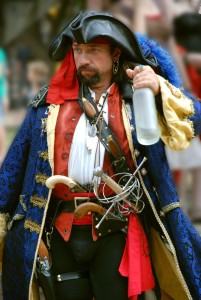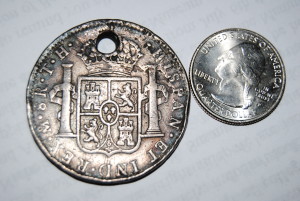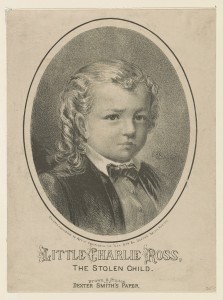
Pirates really had pet parrots
They were not only souvenirs, but a source of revenue. Parrots were popular pets and pirates got good prices for them at the bird markets of 18th century London. Pirates even offered them as presents to officials to bribe them.
One pirate said the best birds came from the Bay of Campeche near Veracruz, Mexico. The red and yellow parrots there were the largest and prettiest, and they were good mimics. Most pirates took one or two aboard.
Months of sailing without any opportunity to forage for food made the parrots dependent on sailors for food and probably made them tame.

Long John Silver was based on a real person
Robert Lewis Stevenson based one of the most famous fictional pirates of history on his friend, Victorian poet William Ernest Henley, whose most popular work was the 1874 poem “Invictus.” Henley developed tuberculosis of the bone as a child, and at the age of 19, had to get his left leg amputated below the knee. Henley was a large, jovial man full of energy, who got around on a crutch. Stevenson wrote Henley after he published Treasure Island and admitted, “I will now make a confession: It was the sight of your maimed strength and masterfulness that begot Long John Silver … the idea of the maimed man, ruling and dreaded by the sound, was entirely taken from you.”
Pirates with wooden legs were not a myth
Some pirates really did have wooden legs. Since they were not as mobile and had a disadvantage in fighting, they often worked as cooks, just like Long John Silver.

American dollars were originally based on pieces of eight
Pieces of eight and doubloons are the two coins we all associate with pirates. “Pieces of eight” were coins with the value of eight reales. The piece of eight was the Spanish dollar, first minted after 1598. The United States based the value of its dollar on the piece of eight. Pieces of eight were legal tender in the United States until the 1857.
Take a look at the column and winding ribbon on the left side of this piece of eight. Some scholars say the dollar symbol $ is based on that column. In fact, $ was the original symbol for the piece of eight.

Pirates practiced democracy
“Every Man has a Vote.” Pirates operated under a set of written rules and those were the opening words of Captain Bartholomew Roberts’ rules. Typically, pirates elected their captains. Exceptions were during battle, during which the captain exercised complete control. The only members of the crew couldn’t vote were captives or people pressed into service, because they might not vote in the interests of the crew.
Scholars have debated the origins of democracy on pirate ships. It may have been a reaction to the strict government on commercial and naval ships, or to the monarchy back home.

River pirates committed the first kidnapping for ransom in the USA
Two men in a carriage kidnapped four-year-old Charley Ross in Philadelphia in 1874. They offered him and his brother candy if they would take a carriage ride with them. When they offered the brother 25 cents to go into a store and purchase fireworks, they rode off with Charley. For the first time in American history, the kidnappers demanded ransom. Charley’s father was unable to pay, but hoped the kidnappers would release him anyway. Unfortunately, Charley was never seen again.
Two men were later shot during a burglary. One died right away, and the other confessed to the Ross kidnapping before he died. Charley’s brother viewed the bodies and identified them. They were members of a band of river pirates. They attacked ships on the Hudson River and its harbors and later on the Atlantic seaboard, as well as in Philadelphia and Baltimore. Kidnapping for ransom, then, was a new form of piracy.
Charley’s tragic story left us two legacies, a new form of crime and the parental admonition never to take candy from strangers.
Which pirate legacy do you think has had the most lasting influence in the United States culture and history?
Literature on point:
David Cordingly, Under the Black Flag: The Romance and Reality of Life among the Pirates (New York: Random House, 1996, 1st Harvest House ed.)
Carrie Hagen, we is got him: The Kidnapping That Changed America (New York: Overlook Press, 2011)
Tim Travers, Pirates: A History (The History Press)




I loved the picture and history on the 8. Spanish silver and its role in founding the value of the US dollar is a very interesting tale.
I thought so too, Charlie. I’ve always associated the piece of eight with pirates, but it’s real legacy might have been the US dollar.
I would think that basing our dollar on the piece of eight might be the most lasting in our culture. With Halloween just around the corner, however, we might see a lot of peg legs around 🙂 It’s always been my understanding that we learned Democracy from the Iroquois. I found this posting interesting, since I had recently heard about William Kidd (Kyd?) … a pirate that was mentioned on the History Channel, who turned out not to be a real pirate, at all.
I agree with you Sarah, that the dollar and piece of eight relationship might be the most lasting legacy. People certainly have more dollars in their homes than peg legs, parrots, or even copies of Treasure Island. Certainly the Iroquois and the Greeks had more influence on American democracy than did pirates. But I find it fascinating that pirates were practicing democracy before most of the western world.
Very interesting, Ann! Thanks—love the part about Long John Silver and the parrots.
Thanks Colleen! I found the information about Long John Silver quite humorous. Would you consider it a compliment or an insult if you found out his character was based on you?
A splendid blog – informative as well as entertaining. I’ve shared on Facebook.
Thanks so much, Antoine! You have such a wonderful maritime history blog, so a compliment like that coming from you means something!
I love these newsy bits about pirates and the worlds they inhabited, Ann Marie. Parrots and pieces of eight. kidnappers and wooden legs. Democracy on pirate ships! Wow. Thanks for juicy history lessons.
Pirates are fun, just as long as we are only reading about them. I’d hate to fight them or have a child kidnapped by one. They probably did more to influence history and lore than any other brand of criminal, though. Thanks for commenting, Elaine!
This was very interesting, I certainly didn’t know about American dollars being based on pieces of eight. We have family folklore for my 15% French side that Jean Lafitte was related, but I heard from other family members that our family only provided him a place to hide. In any case, it’s probably true that they at least knew him. We do have family genealogy on the French side going back to the very early 1600s because it was kept by French priests, and his name certainly isn’t in there.
I didn’t know that “don’t take candy from a stranger” goes to an actual incident, well known at the time. And I didn’t know that they kidnapped children although I should have guessed. You’re right, they probably did influence history and lore than any other brand of criminal.
Thank you for another very interesting story to learn from!
Glad you liked the post, Susan! You have an interesting connection to pirates in your family history, that’s for sure. Shall we raise a cup of grog to their legacy?